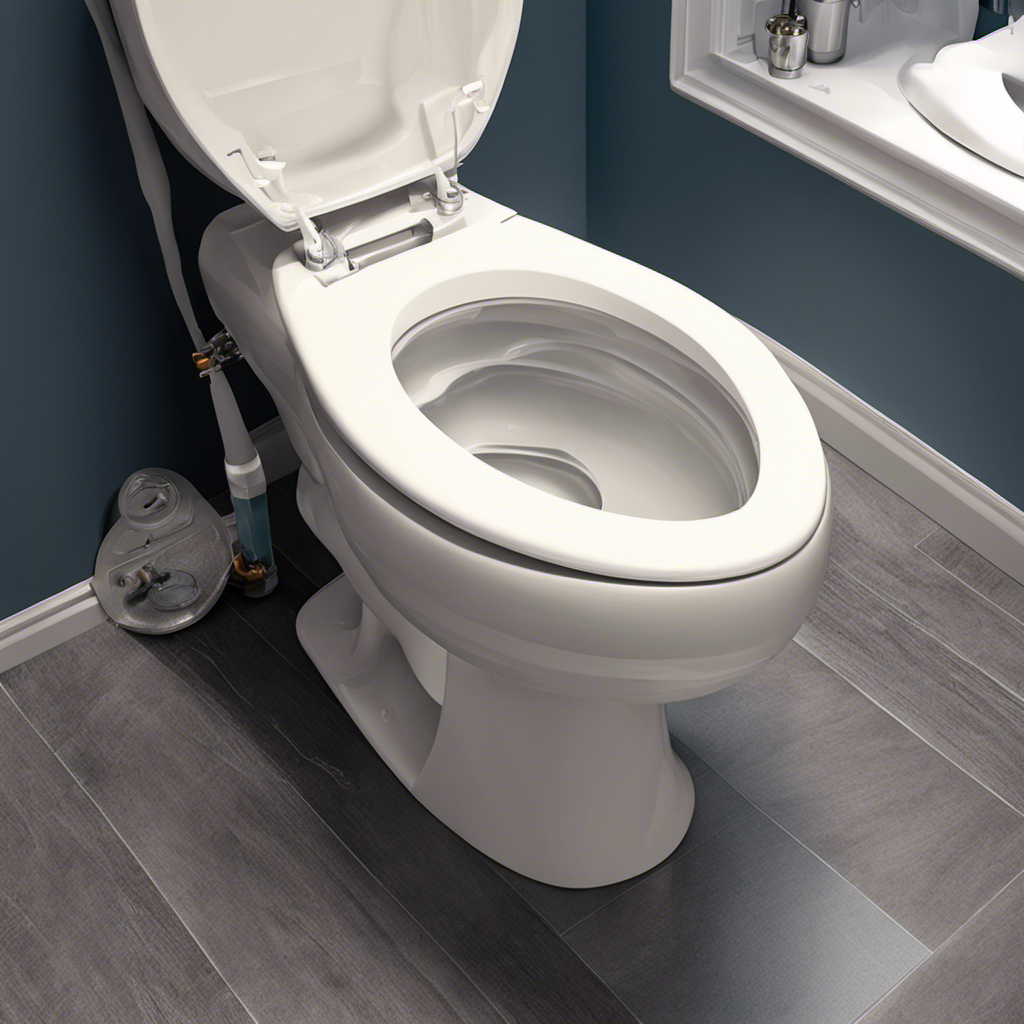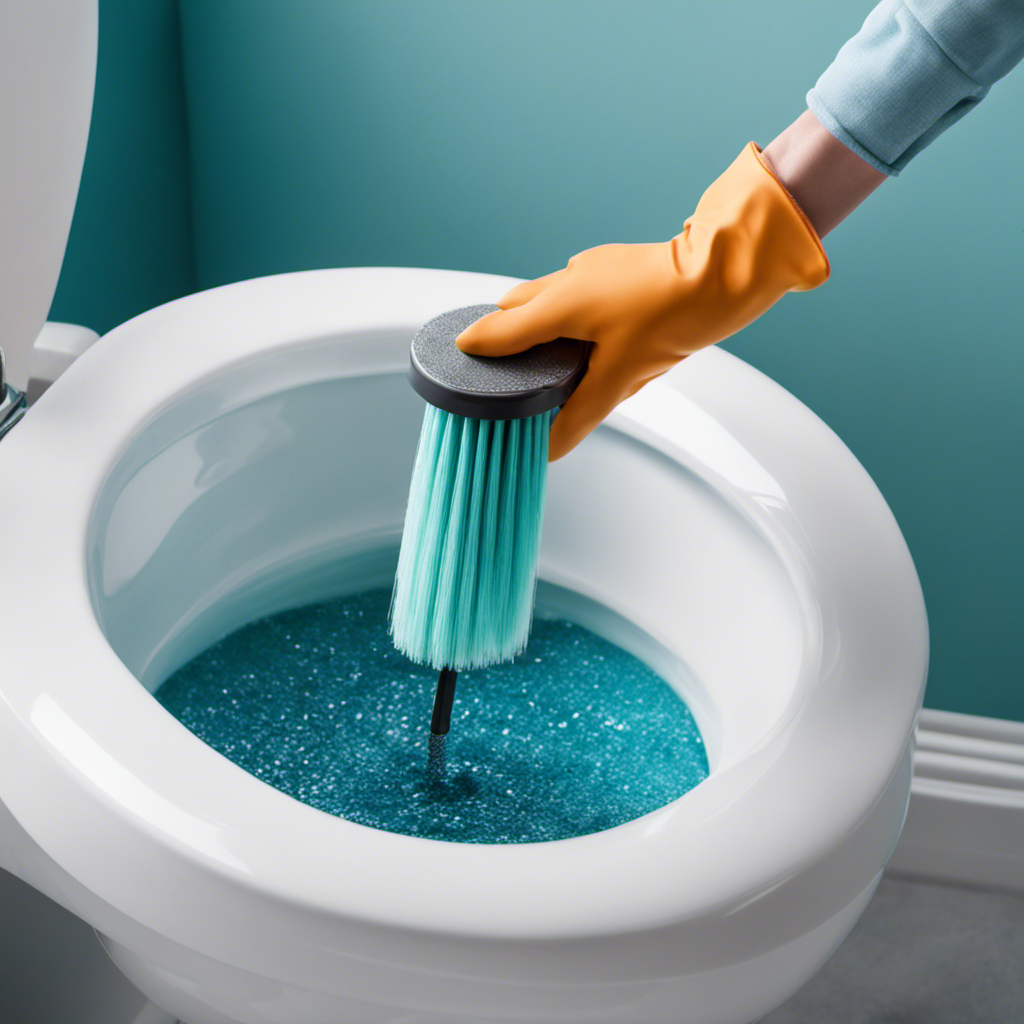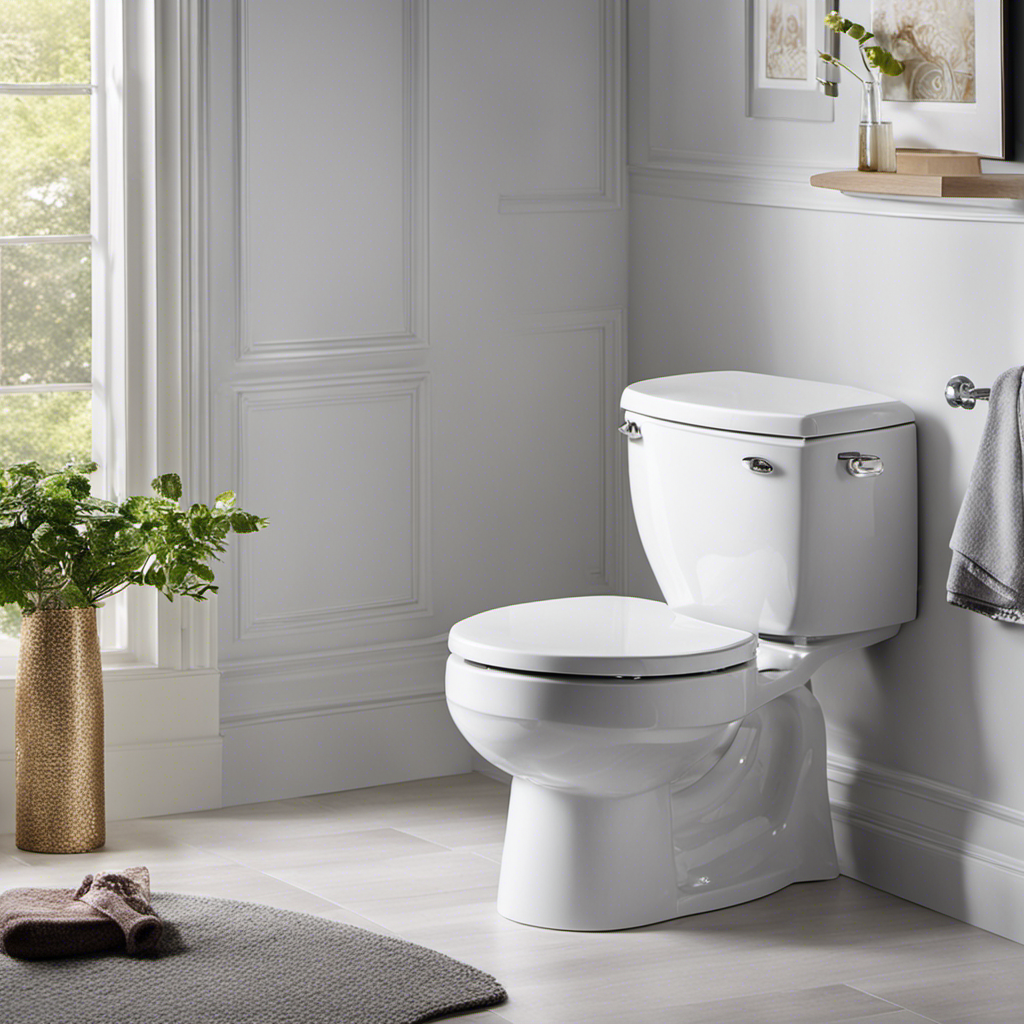Oh boy, have you ever experienced the horror of a backed up toilet? Trust me, it’s a situation you want to avoid at all costs. But fear not, because I’m here to guide you through the process of fixing it.
In this article, I will share my expert knowledge on how to assess the problem, gather the necessary tools, clear the blockage, check the toilet’s water flow, and even prevent future backups.
So grab your plunger and let’s dive in!
Key Takeaways
- Determine if the toilet is clogged or if there is a plumbing problem
- Have a sturdy, bell-shaped plunger with a flange at the end
- Clear the blockage by plunging or using chemical drain cleaners
- Prevent future backups by avoiding flushing items that can cause blockages and scheduling regular maintenance with a professional plumber
Assess the Problem
First, try to determine if the toilet is clogged or if there is a problem with the plumbing. To identify the cause, start by checking if the water level in the toilet bowl is higher than normal. If it is, then it’s likely a clog. You can use a plunger to try and dislodge the blockage. If that doesn’t work, you may need to seek professional help.
However, if the water level is normal, the issue might lie with the plumbing. Check other fixtures in the house to see if they are draining properly. If not, it’s a sign of a larger plumbing problem. In this case, calling a professional plumber is the best course of action to address the issue effectively and prevent further damage.
Gather the Necessary Tools
Before you can start, make sure you have all the necessary tools. Here are three essential items you’ll need for toilet repair and plunger techniques:
-
Plunger: This is the most common tool used to unclog toilets. Make sure you have a sturdy, bell-shaped plunger with a flange at the end. This design creates a tight seal around the drain, allowing you to apply the necessary pressure to clear the blockage.
-
Rubber gloves: It’s important to protect your hands during the repair process. Rubber gloves will shield you from any potential bacteria or unpleasant messes.
-
Bucket: Having a bucket nearby is handy for various reasons. It can be used to collect water from the toilet bowl before plunging, or to catch any overflow if the blockage becomes dislodged.
With these tools ready, you can now move on to the next step of clearing the blockage.
Clear the Blockage
Now that you have all the necessary tools ready, it’s time to tackle the task of clearing the blockage.
There are a couple of effective plunging techniques that you can try. First, make sure there is enough water in the toilet bowl to cover the plunger. Then, place the plunger over the drain opening and push down firmly, creating a tight seal. Next, rapidly push and pull the plunger up and down, using quick and forceful movements. This should create suction and dislodge the blockage.
If plunging doesn’t work, you can consider using chemical drain cleaners. Be cautious when using these cleaners, as they can be harmful to your skin and eyes. Follow the instructions on the product carefully and allow the chemicals to work for the recommended amount of time.
After clearing the blockage, it’s important to check the toilet’s water flow to ensure that everything is functioning properly.
Check the Toilet’s Water Flow
To make sure everything is working properly, you’ll want to check the water flow in the toilet. This is an important step in troubleshooting common toilet issues and understanding the importance of proper toilet maintenance.
Here are three things to look for when checking the water flow:
-
Observe the water level: Start by flushing the toilet and observe how the water fills up the bowl. If the water level is too low or too high, it could indicate a problem with the water flow.
-
Check the refill tube: The refill tube is responsible for filling the tank after a flush. Make sure it is securely connected to the overflow tube. If it’s disconnected or damaged, it can affect the water flow.
-
Inspect the flush valve: The flush valve is located at the bottom of the tank and controls the water release during a flush. If it is not sealing properly or if there are any leaks, it can lead to poor water flow.
Prevent Future Backups
Make sure you regularly maintain your toilet by avoiding flushing items that can cause future backups. Taking simple steps to prevent future backups can save you from the hassle of dealing with a clogged toilet.
First, be mindful of what you flush down the toilet. Avoid flushing items such as sanitary products, wipes, paper towels, or any other non-biodegradable materials. These items can easily cause blockages in your plumbing system.
Additionally, consider installing a toilet paper holder that limits the amount of toilet paper used with each flush. This can help prevent excessive amounts of toilet paper from causing backups.
Lastly, it’s important to schedule regular maintenance with a professional plumber to ensure your toilet and plumbing system are in proper working order. They can identify any potential issues and provide effective plumbing solutions to prevent future backups.
Frequently Asked Questions
How Do I Determine if the Toilet Blockage Is Caused by a Foreign Object or Excessive Waste?
To determine if a toilet blockage is caused by a foreign object or excessive waste, I would first observe any signs of unusual items in the toilet bowl. If nothing is visible, I would proceed to check for excessive waste buildup using a plunger or toilet auger.
Can I Use a Plunger to Clear a Toilet Blockage Without Having to Use Any Additional Tools?
Yes, you can use a plunger to clear a toilet blockage without additional tools. However, if the blockage persists, consider using plunger alternatives or contacting professional plumbing services for assistance.
What Should I Do if the Toilet Is Still Not Flushing Properly After Attempting to Clear the Blockage?
If the toilet is still not flushing properly after attempting to clear the blockage, there are a few steps you can take. First, make sure the water level is normal. Next, try using a toilet auger to clear any stubborn clogs.
Is It Safe to Use Chemical Drain Cleaners to Unclog a Backed up Toilet?
Using chemical drain cleaners to unclog a backed up toilet isn’t safe. I recommend trying natural drain cleaners first, as they are more effective and have fewer drawbacks.
How Can I Prevent Future Toilet Backups if the Issue Seems to Be Recurring?
To prevent future toilet backups due to recurring issues, there are several preventive measures you can take. Regularly check for any signs of blockage, avoid flushing non-flushable items, and consider installing a toilet auger for quick DIY unclogging.
Conclusion
In conclusion, fixing a backed up toilet can be a messy and unpleasant task, but it can be easily resolved with the right tools and knowledge.
By assessing the problem, gathering the necessary tools, and clearing the blockage, you can restore proper water flow and prevent future backups.
Remember, prevention is better than cure. Taking proactive steps such as regular maintenance and being mindful of what you flush down the toilet can save you from future headaches.
So, next time you encounter a backed up toilet, don’t panic. Just roll up your sleeves and get to work, because a stitch in time saves nine!










